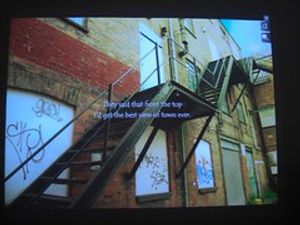transmedia: teaching a dog old tricks?
published onI'm heading to Melbourne on Thursday for the Transmedia Victoria conference. At this point I'm not sure what I'll be able to contribute but I'm interested to see where the cross-over might be for education.
I've had a long term interest in digital storytelling. In 2003 I was lucky enough to visit Daniel Meadows at the Capture Wales project and in the following year a group of us began to experiment with how the concept (and technology) could be simplified enough to be placed in the hands of teachers and students. It has been pretty successful and I think I'm safe in saying that it's now a pretty much accepted/ mainstream strategy for engagement. What DST lacks, on the whole, is interactivity.
Transmedia takes narrative/ storytelling to another level. It's multi-platformed, non-linear, multi-pathed networked storytelling with multiple entry points and outlets. I think where it differs significantly from digital storytelling and where it hold promise for education is that it supports audience interaction, participation and collaboration.
There's some interesting overlap with what Margaret Turner (University of the Sunshine Coast) discusses in her paper 'Contemporary Approach to Writing Non-Linear Online Learning Resources' (Journal of Learning Design 2(2)) . She describes the structure of the content as distributed, connected, multi-directional, potential, open and ephemeral.
'What is needed in writing for networked media', she says, ' is a way of writing learning content that will clearly signal to participants the following characteristics of the medium:
- That useful meaning can be developed following concepts that are distributed rather than presented together.
- That there is no hard edge to a discipline, it spreads out to connect with other disciplines and the real world.
- That concepts can be connected along multiple paths in diverse directions to reach similar meanings.
- That there is never-ending potential for expansion, growth; more and more data to be connected and made available to the conversation.
- That things change—information is updated, ideas are modified, links expire, data is moved.
- That control of information is spread and all who connect are potentially stakeholders'
Technology and online spaces are becoming accessible enough yet sophisticated enough now for some really exciting development (make sure you check out Inanimate Alice if you have not already done so). But it does strike me that transmedia in essence really is nothing new. If we consider the project-based approach taken by many GOOD primary school teachers, the learning design employed, while not often digital, certainly has a multimodal approach. Kids develop understanding of a topic via stories, games, art, movement; they build, talk, listen and present.
Whatever comes of the day I'm looking forward to stepping outside the education zone again; hopefully there will be fresh ideas and new connections to power me onward.

[CC FLickR image by crissxross]